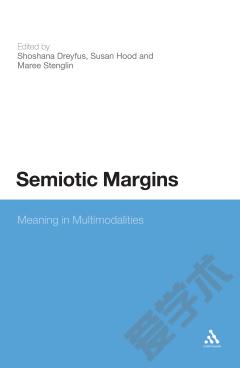Semiotic Margins
Semiotic Margins analyses the meaning making potential of not only language, but modalities like laughter, music, colour, and architectural spaces. By examining resources often positioned on the side-line of mainstream semiotic accounts, this study raises the question of what counts as part of language and communication and why.Beginning with the more established nonverbal resources of communicatiothemes of modalities of meaning are covered. The investigation of music and space looks at how semiotic systems in classical music interact. Using children's books, the relationship between imagmeaning is then explored, presenting implications for student literacy as well as a methodology for supporting children excluded from mainstream literary practices. Finally new approaches to transcribing representations in screen-based technologies are presented through an examination of television advertisements.Semiotic Margins will appeal to linguists and semioticians wishing to pursue research in systemic functional linguistics and multimodal discourse analysis.
{{comment.content}}








 京公网安备 11010802027623号
京公网安备 11010802027623号